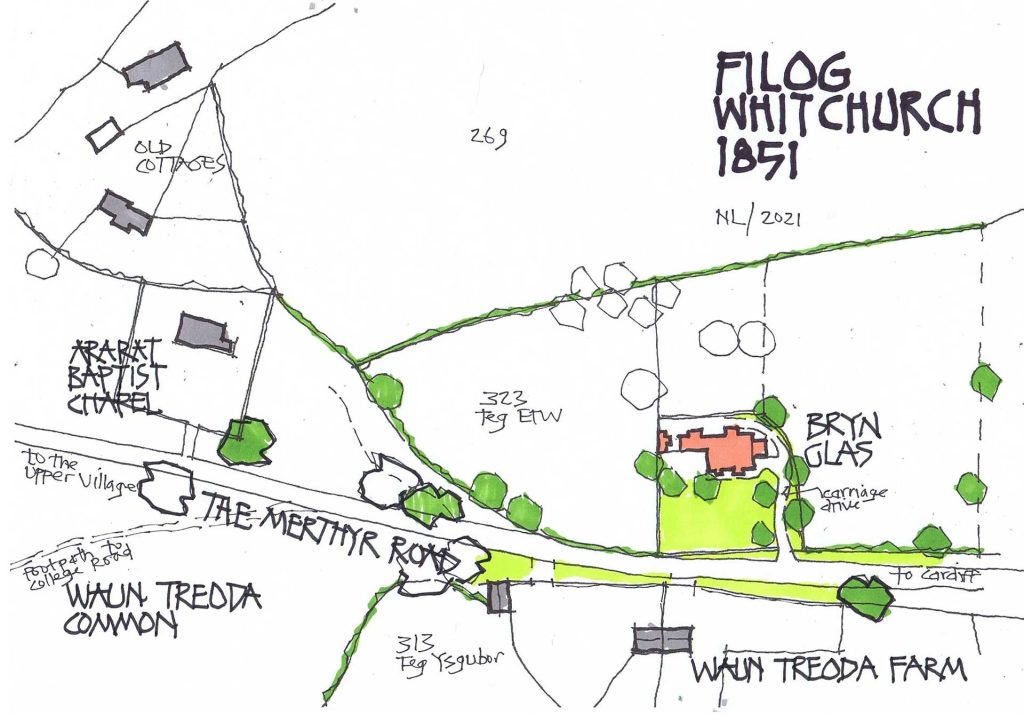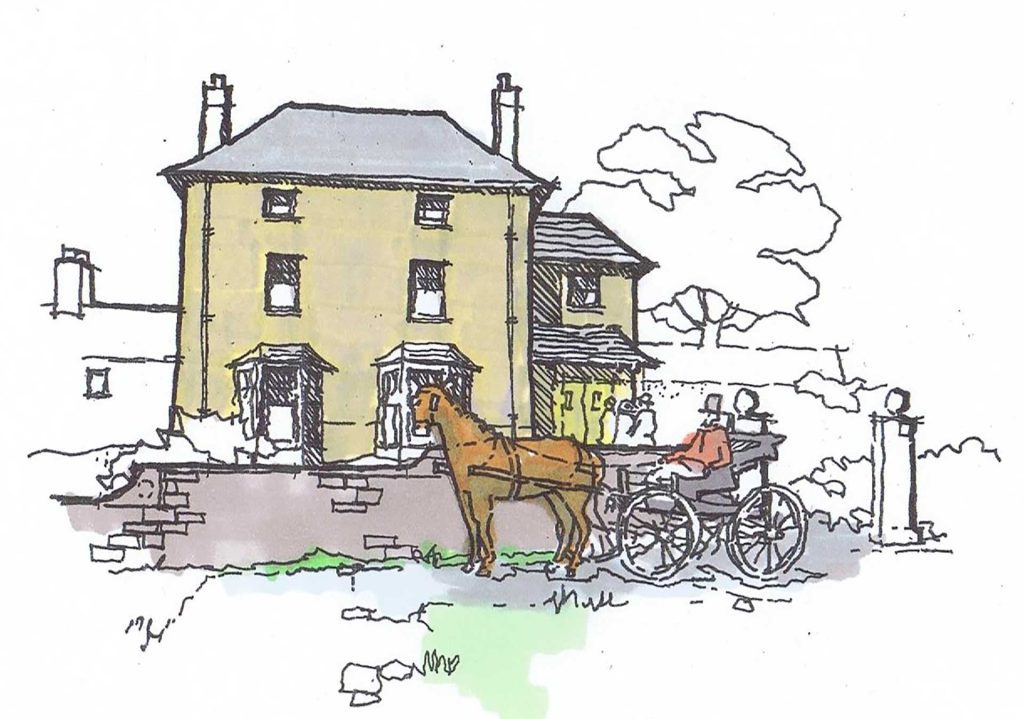Bryn Glas
A story of a mystery Whitchurch house – and a grand story! Nigel Lewis charts the intriguing story of the Vachell family
By Nigel Lewis
The Vachell family were well-known in Cardiff in the eighteenth and nineteenth centuries, and the earliest reference is of Charles Vachell.
In 1796, he was hauled up before the Cardiff Quarter Sessions for trading as a druggist without permission. I think a druggist back then was quite different to anything we might consider today. He was a pharmacist!
He claimed exemption on the grounds that he had been a ship’s surgeon in the navy, and for three years, had been fighting in the French Revolutionary Wars. It obviously worked because the Vachell family became very well known as druggists in Cardiff for many years thereafter.
Charles Vachell prospered; he married and had a big house in Crockherbtown (now Queen Street) and had three children – Charles Jr, William (who was born in 1789), and another sibling. Charles Jr and William developed the family business in the town centre with their father.
Later, Charles Jr became Mayor of Cardiff and built houses on a new swanky street, just off Crockherbtown. He called it Charles Street, after his father. Others in the family built houses there too.
William, however, planned a different route. He stayed in the family business as a druggist and married Mellicent in 1813. They had five children, with their son Fredrick Charles born in 1828. It seems that all the others died young, with Mellicent dying too in 1831. William married again to Ann, and had a son, but they too sadly died.
Like so many successful men at that time, William decided to retire to the country – to leafy Whitchurch. He sold his business to Griffith Phillips, who later moved to Whitchurch himself and also became Mayor in due time, but that’s another story!
We first find a record of William in the village on the Tithe Map of 1840 when he was living in Wauntreoda Farm (later of Flays Farm fame), and tenanting all of the land on both sides of the Merthyr Road towards the Philog. At that time there were no houses, just the farm, Ararat Chapel, and the Three Elms pub on the corner. Otherwise, it was just open fields.
Ten years later, we find William still living in Whitchurch, but not at the farm. He was listed as a ‘retired druggist’, living with his 23-year-old son, a housekeeper, and two other servants in a house on the Philog, seemingly opposite the farm.
So where was he living? There’s not much to guide us. Much later, on the OS map of 1880, there was a house called Bryn Glas, opposite the farm. This was set back from the road with a sweeping driveway and extensive gardens with trees. Was this the house that William had built as his home? But, by then, there were lots of small cottages along the road too.
The sketch map below shows the area about 1851 with Bryn Glas in splendid isolation. If Bryn Glas was William’s house, I wonder what it looked like? There are no drawings or photographs to help, but there are a few clues.

Tony Lloyd tells us that in 1851, William had a terrace of 6 houses built on North Road at Blackweir; and they’re still there (see photograph). They have Georgian proportions with elegant windows and hipped slated roofs. And there were a few other grand houses being built at that time; Roath Court in Newport Road and Rosemount on North Road, both with Georgian proportions and styling. Bryn Glas might well have looked like them.
The coloured sketch below gives an impression of what William might have built on the Philog. Possibly a 3-storey house with bay windows on the ground floor and sash windows over. I suspect that Bryn Glas might have had a render finish and, of course, topped with a hipped slated roof with tall chimneys. All very grand.

It’s been suggested that William had plans to add extensive pleasure gardens with lawns and landscaped grounds all the way down to the Philog, but this never happened.
So, what happened to William and his son?
By 1861, William Bedlington, a mining engineer from Durham was living in the house with his family, and there was no sign of the Vachells. It is thought that William Vachell died about 1860 (before he had chance to landscape his grounds), and William Bedlington acquired the house.
William’s son Fredrick Charles moved to Llandaff and had an enormous house built for himself there. I wonder what happened to him?
In time, William Bedlington also died but his widow and family remained in the house (she was still there in 1891, according to the census).
We’ve been told tales of the old house becoming more and more derelict, and ending up as a playground for local children after WW1. Nothing of Bryn Glas remains now. The ruins were cleared away and the site is now occupied by the block of flats called Retford Court.
The front boundary walls are all fine stone, and I wonder if they were part of the original house? And there are some large trees in the grounds, but they are probably too young to be the originals from Bryn Glas. But as so often is said in the village, who knows?
A mystery house with an intriguing family story. Do you know any more about William and his son, or about Bryn Glas? We’d love to hear!
Nigel Lewis is a member of AWEN@thelibrary (awen.cymru@gmail.com)

